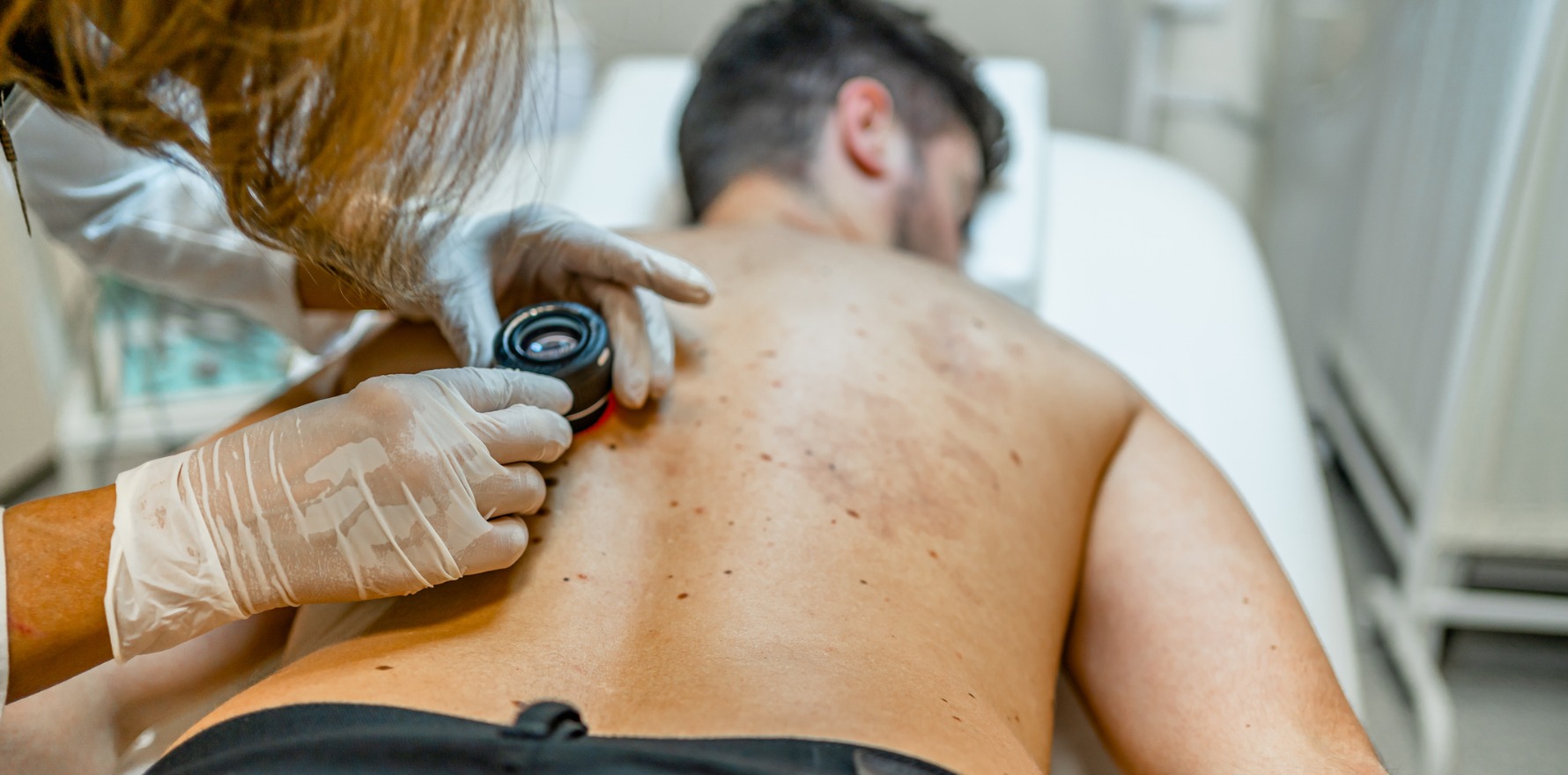People who undergo skin screening and surveillance have a two to four-fold increase in undergoing further tests and being diagnosed with cancer in future.
New research from Queensland confirms people who undergo skin screening continue to experience increased melanoma checks and detections in the years that follow.
The number of melanomas being diagnosed has increased dramatically in recent times. Some experts think this trend can, in part, be explained by a greater number of people undergoing skin checks on a regular basis. But there are also concerns that the increased awareness around skin cancer prevention and monitoring is feeding into a “cycle of overdetection” – and overdiagnosis.
Now, a new study, published in the British Journal of Dermatology, confirms Australia is potentially in the middle of such a cycle, reporting that people undergoing skin detection events in one year have a two- to four-fold increase in the risk of undergoing additional procedures or being diagnosed with melanoma in subsequent years.
“Our findings are consistent with the notion that people undergoing skin screening (defined as biopsies or excisions for non-malignant conditions) and skin surveillance (people with a confirmed diagnosis of a keratinocyte cancer) subsequently experienced much higher levels of diagnostic activity and higher rates of melanoma detection,” the authors wrote.
Researchers from the University of Queensland and the QIMR Berghofer Medical Research Institute examined Medicare data for over 10 million Australians and examined whether they experienced skin cancer detection event – like a skin biopsy – and whether undergoing such a screening was related to the risk of developing a melanoma in the future.
Of the 10.6 million people included in the study, 10.1 million did not have any diagnostic skin events in the initial 12-month period (unscreened), roughly 330,000 underwent a skin biopsy or had a suspected melanoma removed (screened) and approximately 220,000 had a keratinocyte cancer removed (surveilled).
Compared to people in the unscreened group, a greater proportion of people in the screened and surveilled group were aged 60 years and older, were born in Australia, lived in Queensland, and only spoke English at home.
The research team identified Australians underwent an additional million biopsies, 700,000 excisions for a suspected melanoma and 50,000 excisions of confirmed melanoma during the subsequent three-year follow-up.
After adjusting for age, sex, state of residence, marital status, socioeconomic status, how long the person had been living in Australia and what language they spoke at home, people who had undergone screening during the initial 12 months had 2.6 times the risk of undergoing a skin biopsy or an excision for a suspected melanoma at some point in the following three years compared to someone who went unscreened, and 3.3 times the risk of having an excision that was later confirmed to be a melanoma.
Similarly, people in the surveilled group had 4.6 times the risk of undergoing a skin biopsy in the following three-year period, had 2.6 times the risk of having a suspected melanoma excised and 3.4 times the risk of an excision being confirmed as a melanoma.
The increase in risk of undergoing additional procedures or being diagnosed with melanoma persisted throughout the three-year follow-up period.
“We conclude that, in Australia at least, once a patient has undergone one diagnostic skin procedure, they are at a higher risk of having more, with no apparent distinction based on the histological diagnosis made at the index diagnostic event,” they wrote.
Related
The study was limited by the fact that the researchers did not have information about the specific phenotype of the confirmed melanomas, nor did they have access to pathology reports or data on whether individuals died during the follow-up period after their cancer was confirmed.
These limitations aside, they highlighted the need to find better ways to determine potential benign melanomas from those that may not be as friendly.
“Ideally, non-invasive, reliable tools (perhaps embracing artificial intelligence) will be developed that can be deployed in the clinic, obviating the need for biopsy and excision of indolent lesions, thereby breaking the cycle of overdetection,” the researchers wrote.




